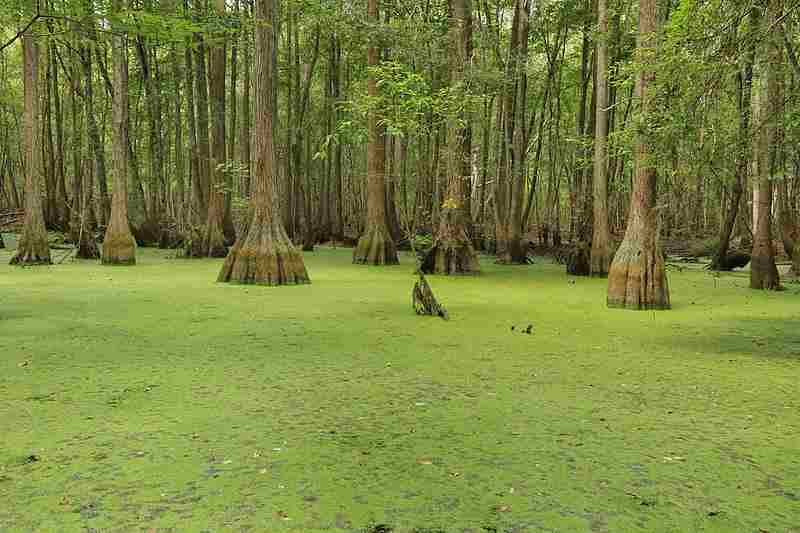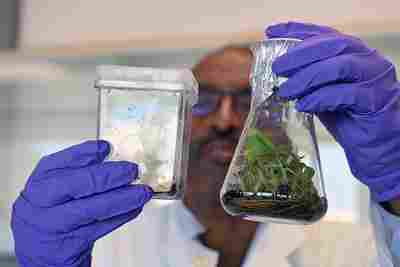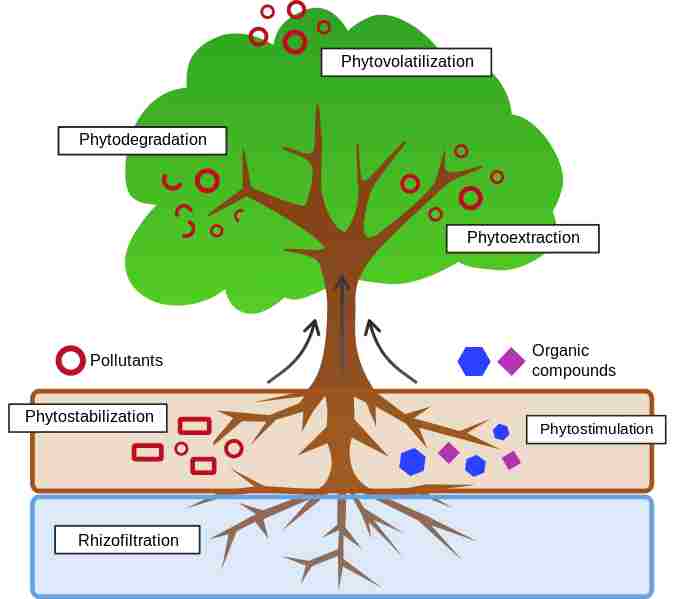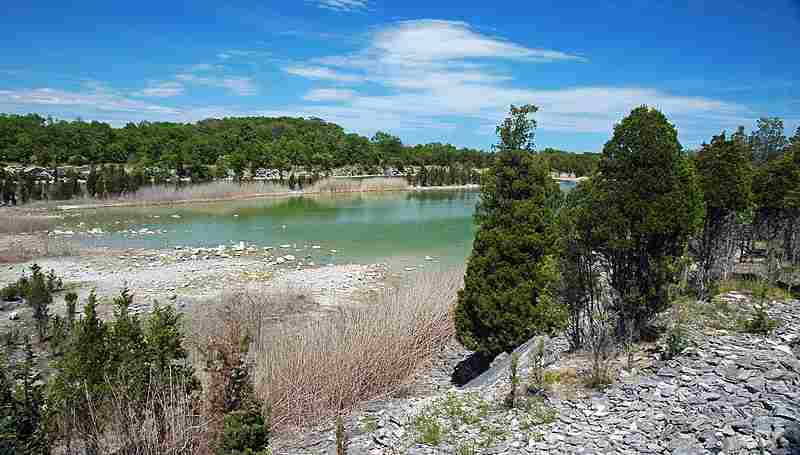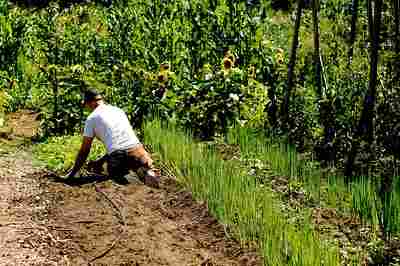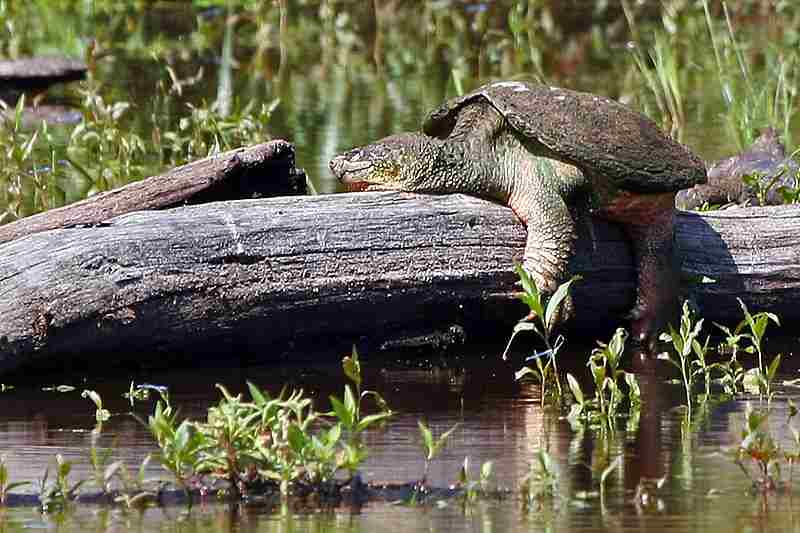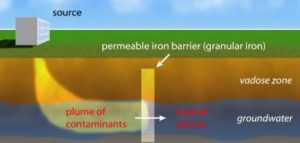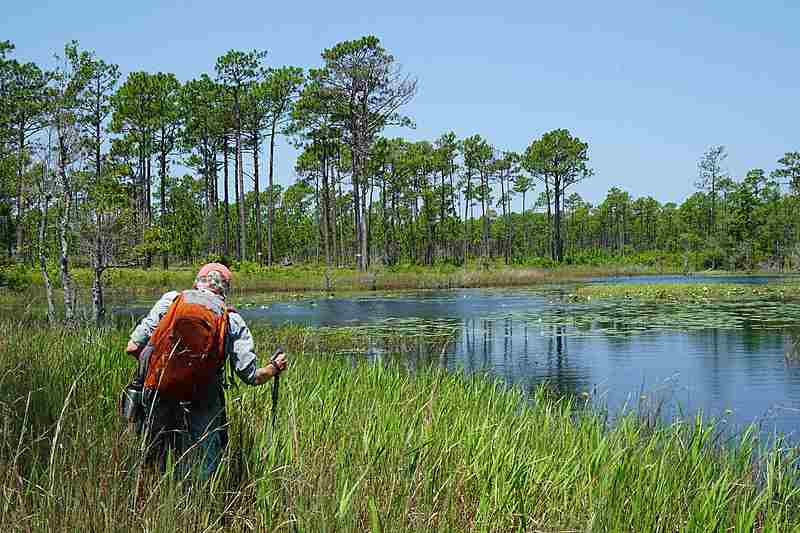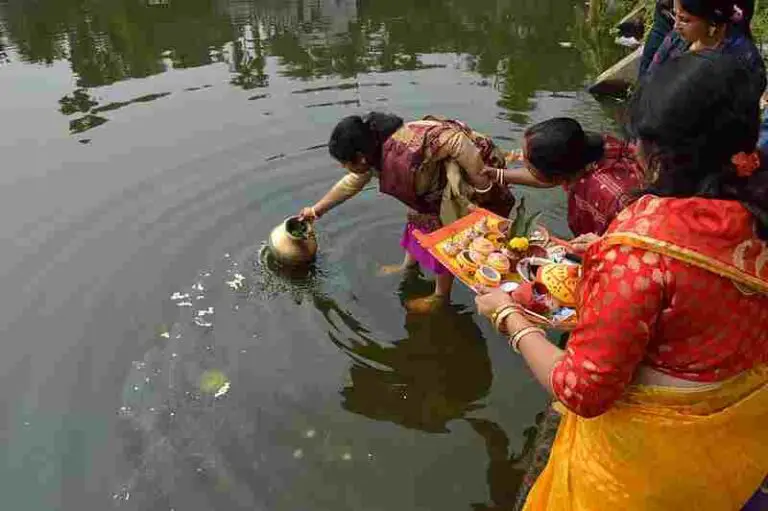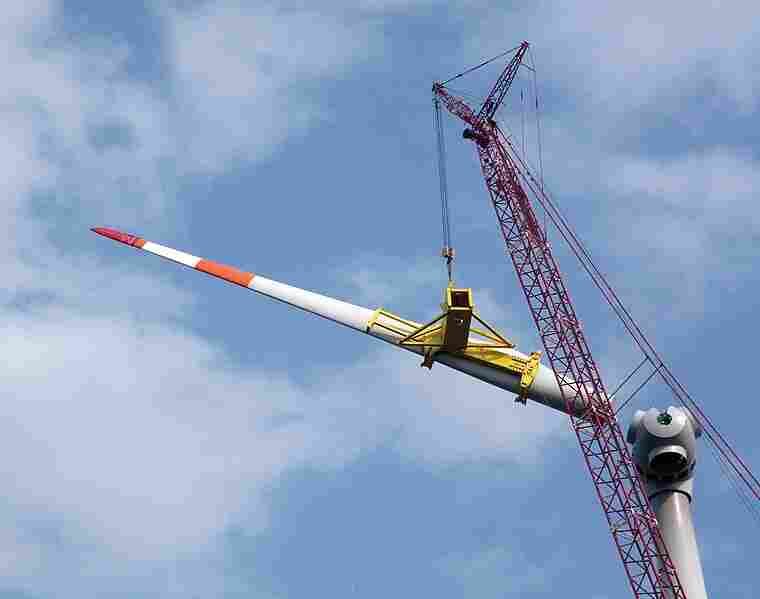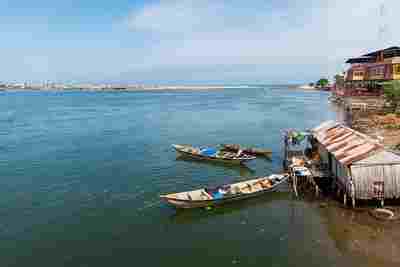10 Examples of Phytoremediation and Their Procedures
Examples of phytoremediation include phytostabilization using hyacinth and duckweed in wetlands, afforestation of abandoned mine sites, plant-facilitated removal of heavy metals from landfill soils, restoration of degraded industrial land using plants to remove PCBs, fern cultivation on arsenic-contaminated agricultural land, phytofiltration by mangrove plants in salt marshes, white willow tree cultivation for groundwater remediation, phytosequestration using energy crops, Indian grass planting on overgrazed and leached grasslands, and reforestation of lands affected by acid mine drainage.
This article discusses examples of phytoremediation, in a format which includes materials and methods (directives) involved; as follows;
1). Phytostabilization Using Hyacinth and Duckweed in Contaminated Wetland Water
*Materials Involved
Water hyacinth and duckweed plants
Contaminated wetland water
Containers or ponds for growing plants
Tools for water testing
Soil or substrate if needed
Monitoring equipment
*Basic Method
Phytostabilization of wetlands using aquatic plant like hyacinth and duckweed, involves site selection, plant (bioaccumulator) selection, cultivation/planting, monitoring, harvesting, disposal, repetition, and final assessment. These are outlined below;
Identify a contaminated wetland site where you want to use phytostabilization. This could be a wetland area with pollution issues.
Choose suitable plants for phytostabilization. Water hyacinth and duckweed are common choices as they are effective at removing contaminants.
Plant the selected vegetation in containers or ponds within the wetland area. Ensure that the plants have access to the contaminated water.
Regularly monitor the water quality. Test for contaminants like heavy metals, pesticides, or other pollutants that you want to remove.
Allow the water hyacinth and duckweed to grow. These plants have a natural ability to absorb and accumulate contaminants from the water.
Periodically, harvest the grown plants. This step is essential as it removes the contaminants that the plants have absorbed.
Properly dispose of the harvested plants containing contaminants, following environmental guidelines.
Continue this process, allowing new plants to grow and absorb more contaminants. Regular monitoring ensures that the water quality improves over time.
After some time, assess the water quality to determine the effectiveness of phytostabilization. You should observe a decrease in contaminant levels.
Overview of Phytoremediation of Wetlands
Phytoremediation of wetlands is a method that uses plants to clean up polluted wetland environments. These plants, like water hyacinth and duckweed, have a special ability to absorb and accumulate contaminants from the water. This process can help improve the water quality in wetlands, making them healthier for both the environment and the organisms that live there. It's a natural and eco-friendly way to deal with wetland pollution.
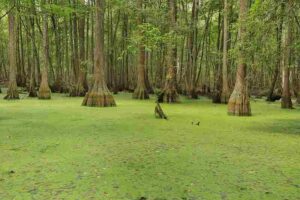
2). Afforestation of Abandoned Mine Sites
*Basic Method
Afforestation of abandoned mine sites is a phytoremediation project that ideal for remote; forested environments, and involves the planting of trees and other vegetation on land that was previously used for mining activities.
The goal is to restore the ecosystem, mitigate environmental damage, and reduce the risk of pollution caused by the remnants of mining operations. The basic method includes the steps like site assessment, selection of tree species, planting of the trees, soil conservation/amendment, monitoring and maintenance, as well as long-tern management. They are further elaborated as follows;
The first step involves a thorough assessment of the abandoned mine site to understand the extent of contamination, the types of pollutants present (like heavy metals), and the ecological conditions of the area.
Based on the site assessment, suitable tree species are selected for afforestation. These species are chosen for their ability to tolerate or accumulate specific contaminants present in the soil and groundwater.
The selected tree species are planted on the mine site. This afforestation process involves the establishment of a new forest or woodland in the previously disturbed area. Planting techniques, such as seedlings or saplings, are used to establish the tree cover.
In some cases, soil amendments or treatments may be necessary to improve the soil's fertility and structure, as mining activities can often degrade soil quality.
Regular monitoring of the site is essential to assess the growth of the planted trees and their ability to absorb contaminants from the soil and groundwater. Maintenance activities, such as watering, weeding, and pest control, are carried out as needed.
Afforestation is a long-term project, and the site may require management for many years to ensure the success of phytoremediation. This may include periodic pruning or thinning of trees and continued monitoring of soil and water quality.
Usability of This Approach
Afforestation of abandoned mine sites is best suited for conditions involving intense mining activities with untreated waste (tailings), high contamination-spread risk, and nearby natural ecosystems.
This method is specifically designed for areas that were previously used for mining activities and have been abandoned or closed.
It is particularly useful in situations where there is a risk of contamination from mining residues, such as heavy metals or acidic drainage.
Afforestation not only remediates contaminated soil but also helps improve overall soil quality and stabilize the land, reducing the risk of erosion and runoff. This approach contributes to the restoration of biodiversity and ecosystem functions in areas affected by mining.
*Definition of Acid Drainage from Mines
Acid mine drainage is the formation and movement of highly acidic water that is rich in heavy metals. This acidic water is created through a chemical reaction between surface water (such as rainwater, snowmelt, or pond water) and shallow subsurface water with rocks containing sulfur-bearing minerals.
The reaction results in the production of sulfuric acid, which is highly acidic and can dissolve heavy metals from rocks and soils, leading to water pollution.
Acid mine drainage is a significant environmental issue associated with abandoned coal mines and can have detrimental effects on aquatic ecosystems and water quality downstream from these mines. Phytoremediation, including afforestation, is one of the methods used to mitigate the impacts of acid mine drainage by stabilizing the affected areas and reducing the movement of contaminants into water bodies.
3). Plant-Facilitated Removal of Heavy Metals from Former Landfill Soils
*Materials Involved
Ferns (or suitable phytoremediation plants)
Contaminated soil from a former landfill
Planting tools (like shovels, gloves)
Monitoring equipment for heavy metal analysis
Proper disposal systems/methods for harvested plants
*Basic Method
The basic method for heavy metal remediation of former landfill soils, involves typical steps like site selection, plant selection, planting, monitoring, growth and subsequent harvesting, disposal, repetition, and final assessment. They are again highlighted below;
Identify a former landfill site with heavy metal contamination in the soil that requires remediation.
Choose phytoremediation plants that have a natural ability to absorb and accumulate heavy metals from the soil. Ferns are mentioned in the context; however, other suitable plants can be chosen based on the specific heavy metals present.
Plant the selected vegetation in the contaminated soil. Ensure that the plants have proper access to sunlight and water.
Regularly monitor the soil quality. Test for heavy metal concentrations to track the progress of phytoremediation.
Allow the phytoremediation plants, such as ferns, to grow. These plants will naturally absorb heavy metals from the soil through their roots.
Periodically, harvest the grown plants, especially the parts with high heavy metal accumulation (usually the roots or stems). This step is crucial as it removes the heavy metals from the soil.
Dispose of the harvested plants containing heavy metals according to environmental regulations and guidelines.
Continue the planting and harvesting process, allowing new plants to grow and extract more heavy metals from the soil. Regular monitoring ensures that the heavy metal levels in the soil decrease over time.
After some time, conduct a final assessment of the soil quality to determine the effectiveness of phytoremediation. There should be a noticeable reduction in heavy metal concentrations.
Concept of Landfill Phytoremediation
Phytoremediation of landfills is a technique that utilizes plants to clean up polluted landfill sites. These plants have the ability to absorb heavy metals and other contaminants from the soil, stabilizing and remediating the landfill. This eco-friendly method can be particularly effective in mitigating the environmental impact of landfill sites.
Phytoremediation can effectively remove heavy metals from contaminated soil. Bioaccumulator plants have the capability to absorb and accumulate heavy metals from the soil through their root systems. This process helps reduce the concentration of heavy metals in the soil, making it less harmful to the environment.
*Recap of The Process of Phytoremediation of Heavy Metals
Steps in the process of phytoremediation of heavy metals include plant selection, cultivation, monitoring, harvesting, disposal and repetition, according to the outline below;
Choose suitable phytoremediation plants based on the specific heavy metals present in the contaminated soil.
Plant the selected vegetation in the contaminated soil.
Regularly monitor the soil quality, including heavy metal concentrations.
Allow the phytoremediation plants to grow and absorb heavy metals from the soil.
Periodically harvest the grown plants, especially the parts with high heavy metal accumulation.
Dispose of the harvested plants containing heavy metals following environmental regulations.
Continue the planting and harvesting process to reduce heavy metal levels in the soil over time.
Conduct a final assessment to determine the effectiveness of phytoremediation, which should result in reduced heavy metal concentrations in the soil.
4). Restoration of Degraded Industrial Land Using Plants to Remove Polychlorinated Biphenyls (PCBs)
*Materials Involved
Hyperaccumulator plants (suitable for PCB removal)
Contaminated industrial land
Planting tools (shovels, gloves, etc.)
Monitoring equipment for PCB analysis
Proper disposal methods for harvested plants
Oxygenation equipment (if needed for aerobic bioremediation)
*Basic Method
Steps involved in the phytoremedial treatment of industrial land pollution by PCBs include preliminary assessment, plant selection, cultivation, monitoring, plant growth, harvesting, disposal, oxidation (if required), repetition and final assessment. They are outlined below;
Identify an industrial land site contaminated with polychlorinated biphenyls (PCBs) that requires remediation.
Choose phytoremediation plants that are known to have the ability to absorb and accumulate PCBs from the soil.
Plant the selected vegetation in the contaminated soil. Ensure that the plants have access to sunlight, water, and oxygen (if needed for aerobic bioremediation).
Regularly monitor the soil quality, including PCB concentrations, to track the progress of phytoremediation.
Allow the phytoremediation plants to grow and absorb PCBs from the soil through their root systems.
Periodically harvest the matured plants, especially the parts with high PCB accumulation, such as roots or stems.
Dispose of the harvested plants containing PCBs following environmental regulations.
If aerobic bioremediation is applicable, introduce oxygen, co-substrates, inducers, surfactants, or PCB-degrading bacteria to enhance PCB degradation.
Continue the planting and harvesting process, as well as any bioremediation efforts if needed, to reduce PCB levels in the soil over time.
After some time, conduct a final assessment of the soil quality to determine the effectiveness of phytoremediation. There should be a noticeable reduction in PCB concentrations in the soil.
How to Remove Polychlorinated Biphenyls (PCBs): Overview
PCBs can be removed through various methods, including phytoremediation. Other methods for removing PCBs from contaminated areas include granular activated carbon filtration and aerobic bioremediation.
The choice of method depends on the specific contamination and site conditions.
Aerobic bioremediation is one approach to encourage the degradation of PCBs. This process involves the addition of oxygen, co-substrates, inducers, surfactants, and sometimes the introduction of PCB-degrading bacteria. It aims to break down PCB molecules into less harmful forms.
*List of Pollutants Removed by Phytoremediation
Phytoremediation is capable of removing a wide range of pollutants, including heavy metals, hydrocarbons, pharmaceuticals, pesticides, and persistent organic compounds like PCBs. It is an eco-friendly technique that utilizes plants to extract, accumulate, and sometimes transform these contaminants, making it a valuable tool in environmental remediation efforts.
5). Fern Cultivation on Arsenic-Contaminated Agricultural Land for Phytoremediation
*Materials Involved
Pteris vittata ferns, which are known for their ability to hyperaccumulate arsenic.
Arsenic-contaminated agricultural land, which is the site requiring remediation.
Planting tools like shovels, gloves, and other gardening equipment.
Monitoring equipment or instruments to analyze arsenic levels in soil and fern fronds.
Proper disposal implements to safely manage harvested ferns containing concentrated arsenic.
Optional bioremediation agents like additional substances or microorganisms, can be introduce to enhance arsenic degradation, if necessary.

*Basic Method
Steps and processes involved in Arsenic removal using ferns include; site assessment, fern selection, cultivation, exposure to solar radiation and water supply (for growth), monitoring, harvesting, proper disposal, surfactant/oxygen application, repetition and final assessment. They are elaborated as guidelines below;
Identify agricultural land contaminated with arsenic in need of remediation.
Choose Pteris vittata ferns, known for their tolerance to high arsenic levels and efficient hyperaccumulation.
Plant Pteris vittata ferns in the contaminated soil, ensuring proper spacing for healthy growth.
Ensure the ferns have access to sunlight and sufficient water to support their growth.
Regularly monitor the soil for arsenic levels and the ferns for signs of hyperaccumulation.
Periodically harvest mature fern fronds, especially those with high arsenic accumulation.
Dispose of harvested ferns, which contain concentrated arsenic, following environmental regulations.
If needed, introduce oxygen, co-substrates, inducers, surfactants, or arsenic-degrading microorganisms to enhance arsenic degradation.
Continue the planting, harvesting, and any bioremediation efforts as needed to reduce arsenic levels in the soil.
After some time, conduct a final assessment to determine the effectiveness of phytoremediation. There should be a noticeable reduction in arsenic concentrations in the soil.
Additional Notes On the Use of Ferns In Phytoremediation
Pteris vittata is the fern species best known for its ability to accumulate arsenic. It is a hyperaccumulator, meaning it can tolerate and efficiently store high levels of arsenic within its tissues.
While Pteris vittata is a well-known fern for phytoremediation of arsenic-contaminated soil, there are other fern species with phytoremediation potential, such as Nephrolepis cordifolia and Hypolepis muelleri, which can stabilize and accumulate various metals, including copper, lead, zinc, and nickel. Additionally, ferns like Pteris umbrosa and Pteris cretica have been identified as accumulators of arsenic in their leaves.
Phytoremediation using ferns like Pteris vittata is a promising and cost-effective approach to reducing arsenic contamination in soil, making it safer for agricultural purposes and the environment.
6). Phytofiltration by Mangrove Plants in Polluted Salt Marshes
*Materials Involved
Mangrove plants; which are salt-tolerant halophytes that are key to the phytoremediation process.
Polluted salt marshes or marine/brackish wetland areas contaminated with heavy metals, organic contaminants, or other pollutants.
Monitoring equipment or instruments to assess pollutant levels in both soil and plant tissues.
Planting tools like shovels, gloves, and other equipment for planting and maintaining mangrove plants.
Additional bioremediation agents (optional) including microbes and biochemicals to enhance pollutant degradation.
Water quality testing tools or equipment to analyze water quality parameters.
*Basic Method
The basic steps here are identical to those of other phytoremediation examples/projects, including site assessment; mangrove selection, planting, maintenance, monitoring, harvesting, disposal, technique combination, water quality testing, and final assessment. They are outlined below;
Identify polluted salt marshes in need of remediation, assessing the type and concentration of contaminants present.
Select suitable mangrove species known for their cross-tolerance to salt, metals, and organic contaminants.
Plant mangrove seedlings or propagules in the contaminated marsh areas. Ensure appropriate spacing for optimal growth.
Provide adequate sunlight, water, and nutrients to support mangrove growth and pollutant uptake.
Regularly assess pollutant levels in both soil and mangrove tissues to track the remediation progress.
Depending on the contamination levels, you may need to periodically harvest mature mangrove plants.
Properly dispose of harvested mangroves containing concentrated contaminants, following environmental regulations.
Introduce optional bioremediation agents or techniques to enhance pollutant degradation or transformation.
Continuously monitor water quality parameters in the surrounding aquatic environment.
After a certain period, conduct a final assessment to determine the effectiveness of phytoremediation. There should be a noticeable reduction in pollutant levels in both soil and water.
Aquatic Plants and Methods Used for Phytoremediation
Various aquatic plants are used in phytoremediation, including water hyacinth (Eichhornia crassipes), which is known for its rapid growth and pollutant uptake capabilities.
Methods of phytoremrdiation in water include rhizofiltration (uptake of contaminants by plant roots), phytoextraction (uptake from soil), and phytotransformation (involving the degradation of contaminants) among others. These methods aim to detoxify, decompose, convert, or chelate contaminants in aquatic environments.
Phytoremediation in the aquatic environment is an eco-friendly process that detoxifies, decomposes, converts, or chelates contaminants in water bodies. It helps maintain aquatic ecosystem functionality by reducing the impact of pollutants, allowing for the proper treatment of wastewater-contaminated water bodies and restoration of ecosystems like salt marshes and mangroves.
7). White Willow Tree Cultivation for Groundwater Pollutant Extraction
*Materials Involved
White willow trees (Salix alba); which are known for their effectiveness in phytoremediation.
Contaminated groundwater sites, or locations with groundwater polluted by various contaminants.
Monitoring equipment for assessing pollutant levels in groundwater and tree tissues.
Planting tools including shovels, gloves, and equipment for planting and maintaining willow trees.
Water quality testing tools to analyze water quality parameters.
*Basic Method
Site assessment, willow species selection, planting, maintenance, monitoring, harvesting, disposal, and water quality testing; are all applicable steps in the remediation process, as shown in the following guideline;
Identify contaminated groundwater sites and assess the type and concentration of pollutants present.
Choose white willow (Salix alba) as the suitable tree species for phytoremediation.
Plant white willow trees in rows or clusters near the contaminated groundwater source. Ensure proper spacing for optimal growth.
Provide adequate water and nutrients to support tree growth and pollutant uptake.
Regularly assess pollutant levels in both groundwater and willow tree tissues to track the remediation progress.
Depending on the contamination levels, you may need to periodically harvest mature willow trees.
Properly dispose of harvested willow trees containing concentrated contaminants, following environmental regulations.
Continuously monitor water quality parameters in the surrounding groundwater.
After a certain period, conduct a final assessment to determine the effectiveness of phytoremediation. There should be a noticeable reduction in pollutant levels in both groundwater and willow tissues.
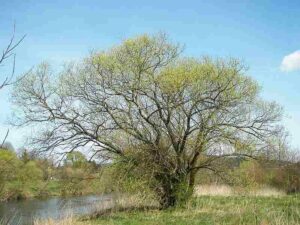
Examples of Phytoremediation: White Willow is a Suitable Tree Species for Phytoremediation (Credit: Willow 2007 .CC BY-SA 2.5.)
*Additional Notes On the Phytoremediation of Groundwater
Phytoremediation of groundwater involves the use of plants to remediate selected contaminants present in contaminated groundwater. This eco-friendly method can help detoxify, convert, or chelate pollutants, effectively treating the groundwater.
White willow trees (Salix alba) are among the best trees for phytoremediation due to their ability to absorb and accumulate contaminants from groundwater effectively. They have been shown to be particularly efficient at removing various pollutants from contaminated sites.
8). Phytosequestration Using Energy Crops
*Materials Involved
Energy crops (like Miscanthus, Ricinus (Castor Bean), Jatropha, and Populus (Poplar) are often selected for their bioaccumulation potential).
Contaminated soil is another material involved in this case of phytoremediation. Sites with soil contaminated by pollutants like heavy metals, are the main subject of the procedure.
Fertilizers or nutrient supplements to support crop growth and pollutant absorption.
Monitoring instruments for assessing pollutant levels in soil and plant tissues on a routine basis.
Planting tools for sowing and maintaining energy crops.
Watering equipment including various irrigation tools for supplying water to the crops.
Equipment for harvesting mature energy crops (if required)
Safety or protective gear for working with contaminated soil.
*Basic Method/Procedure
The procedure for phytosequestration using energy crops, is similar to the general outline of steps in phytoremediation, which is given below. Some aspect of this procedure include preliminary assessment, crop selection, soil preparation, planting, fertilization, irrigation, monitoring, harvesting, disposal and final assessment;
Identify contaminated areas and assess the type and concentration of pollutants in the soil.
Select appropriate energy crops known for their phytoremediation potential. In this case, Miscanthus, Ricinus, Jatropha, and Populus are used.
Prepare the soil by plowing and ensuring proper soil pH and nutrient levels for optimal crop growth.
Plant energy crops at the contaminated site, spacing them appropriately to facilitate growth.
Apply fertilizers as necessary to provide essential nutrients for crop development.
Ensure the crops receive adequate water throughout their growth period.
Regularly assess pollutant levels in both soil and plant tissues to track the remediation progress.
Depending on the contamination levels and the purpose of cultivation (such a for biofuel), harvest mature energy crops.
Properly dispose of harvested crops containing concentrated contaminants, following environmental regulations.
After a certain period, conduct a final assessment to determine the effectiveness of phytoremediation. There should be a noticeable reduction in pollutant levels in both soil and crop tissues.
Additional Note on The Phytoremediation of Lead
Several plants, including wheat, corn, and other grains, have been found to be effective at phytoremediation of lead-contaminated soil. Other grasses and grains such as tapegrass, Highland bent grass, and rapeseed (canola) also have demonstrated effectiveness in lead remediation. These plants have the ability to absorb and accumulate lead from the soil, helping in its removal and detoxification.
9). Indian Grass Planting for Restoration of Overgrazed and Leached Grasslands
*Basic Method
Indian Grass (Sorghastrum nutans) planting is utilized as a phytoremediation project to restore overgrazed and leached grasslands. This approach aims to revitalize grasslands that have been degraded due to overgrazing and soil leaching.
The basic method involves typical steps like site assessment; selection of Indian grass, preparation of the planting site; planting of Indian grass, irrigation and maintenance, monitoring and assessment, as well as long-term management.
Conduct a thorough assessment of the degraded grassland to determine the extent of overgrazing, soil degradation, and the presence of pollutants or contaminants.
Select Indian Grass (Sorghastrum nutans) as the primary plant species for restoration. Indian Grass is native to North America and is well-suited for re-establishing grasslands.
Prepare the soil at the planting site by loosening it and improving its structure if necessary. This may involve soil amendments to enhance fertility.
Plant Indian Grass seedlings or seeds at appropriate spacing across the degraded grassland. Planting can be done using seed drills or by hand broadcasting seeds.
Provide adequate irrigation, especially during the establishment phase, to ensure the Indian Grass takes root and begins to grow. Continue to monitor and maintain the grassland as needed, including weed control and protection against grazing.
Regularly assess the progress of the Indian Grass planting project, including plant growth, soil health, and the overall recovery of the grassland ecosystem.
Implement long-term management practices to sustain the restored grassland, including controlled grazing if necessary, to prevent overgrazing in the future.
*Materials Involved
Indian Grass (Sorghastrum nutans) seedlings or seeds.
Soil amendments (if required).
Irrigation equipment (like sprinklers).
Monitoring tools for assessing plant growth and soil quality.
Fencing or other protective measures to prevent overgrazing.
Factors Affecting Phytoremediation
Several factors can influence the effectiveness of phytoremediation projects.
Some of the factors affecting phytoremediation are; plant selection, plant performance, heavy metal bioavailability, soil properties, rhizosphere properties, environmental conditions, management practices, contaminant type, and local regulations. These are enumerated and discussed briefly below;
The choice of plant species is critical, as different plants have varying abilities to accumulate or tolerate specific pollutants.
The growth and health of the selected plants directly impact their ability to remediate contaminants.
The availability of heavy metals in the soil and water affects the uptake and removal of contaminants by plants.
Soil characteristics, such as texture, pH, and organic matter content, can influence the success of phytoremediation.
The rhizosphere, the region surrounding plant roots, plays a crucial role in contaminant uptake and interactions with soil microorganisms.
Environmental factors like temperature, precipitation, and sunlight can impact plant growth and contaminant remediation rates.
Proper site preparation, planting techniques, and ongoing maintenance are essential for successful phytoremediation.
The specific contaminants present, whether heavy metals, organic pollutants, or nutrients, will determine the suitability of phytoremediation.
Adherence to local environmental regulations and land management practices is necessary for the success of phytoremediation projects.
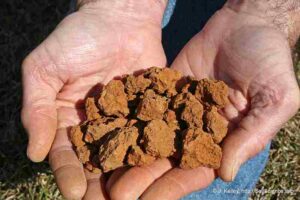
10). Reforestation of Deforested Lands Affected by Acid Mine Drainage
*Materials Involved
Native tree species should be selected, which are tolerant to acid mine drainage (AMD) and capable of phytoremediation.
Soil conditioners or amendments like lime to help neutralize acidic soils.
Tree seeds or young tree seedlings for reforestation.
Tools for planting trees, such as shovels or tree planting machines.
Monitoring equipment for measuring water quality, soil quality, and tree growth.
Fencing (if required), to protect young trees from grazing animals.
Irrigation equipment (if required) for watering trees during initial growth stages.
Protective safety gear for personnel working in potentially contaminated areas.
*Basic Method
The procedure for reforestation of sites affected by acid mine drainage includes typical steps like site assessment, selection of native tree species, soil preparation, planting, irrigation, fencing of cultivated area, regular monitoring, and maintenance. They are listed below;
Evaluate the extent of deforestation and the impact of acid mine drainage on the soil and nearby water bodies.
Choose tree species known for their tolerance to AMD and ability to remediate contaminated soils.
Amend the soil with lime or other conditioners to neutralize acidity and improve soil quality.
Plant tree seeds or seedlings at appropriate intervals and depths in the deforested area.
Ensure that newly planted trees receive sufficient water, especially in arid or dry regions.
Install protective fencing to prevent animals from damaging or grazing on young trees.
Continuously monitor soil and water quality parameters to track the progress of phytoremediation and tree growth.
Perform routine maintenance tasks, such as weeding, pruning, and ensuring proper irrigation.
Over several years, observe the growth of the reforested area and assess improvements in soil quality and water conditions.
Additional Notes on Phytoremediation of Acid Mine Drainage by Reforestation
Phytoremediation of acid mine drainage (AMD) involves the use of plants, typically native and acid-tolerant species, to mitigate the environmental impact of AMD. AMD is a byproduct of mining activities, characterized by high acidity, sulfates, iron, and heavy metals, making it highly detrimental to ecosystems.
The selected native tree species used in reforestation play a crucial role in AMD phytoremediation. These trees are known for their ability to tolerate acidic conditions and accumulate heavy metals, which helps in reducing the pollutant load in both soil and water. By establishing a vegetative cover through reforestation, these trees help mitigate AMD's adverse effects, improve soil quality, and prevent further contamination of water bodies downstream.
Phytoremediation in AMD-affected areas is an environmentally friendly and cost-effective approach to address the long-term impacts of mining activities on the ecosystem. Through the establishment of native forests, the reforestation project can effectively reduce AMD's harmful effects and promote ecological restoration.
Conclusion
Examples of phytoremediation are;
1. Phytostabilization Using Hyacinth and Duckweed in Contaminated Wetland Water
2. Afforestation of Abandoned Mine Sites*
3. Plant-Facilitated Removal of Heavy Metals from Former Landfill Soils
4. Restoration of Degraded Industrial Land Using Plants to Remove Polychlorinated Biphenyls
5. Fern Cultivation on Arsenic-Contaminated Agricultural Land
6. Phytofiltration by Mangrove Plants in Polluted Salt Marshes
7. White Willow Tree Cultivation for Groundwater Pollutant Extraction
8. Phytosequestration Using Energy Crops
9. Indian Grass Planting for Restoration of Overgrazed and Leached Grasslands*
10. Reforestation of Deforested Lands Affected by Acid Mine Drainage
